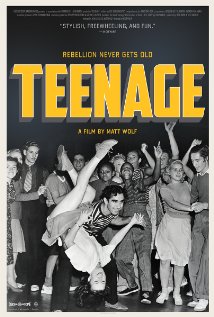
The Hitler Youth was the youth organisation of the Nazi Party in Germany. Its origins date back to 1922 and it received the name Hitler-Jugend, Bund deutscher Arbeiterjugend in July 1926. From 1936 until 1945, it was the sole official boys' youth organisation in Germany and it was partially a paramilitary organisation. It was composed of the Hitler Youth proper for male youths aged 14 to 18, and the German Youngsters in the Hitler Youth for younger boys aged 10 to 14.

The Edelweiss Pirates were a loosely organized group of youths opposed to the status quo of Nazi Germany. They emerged in western Germany out of the German Youth Movement of the late 1930s in response to the strict regimentation of the Hitler Youth. Similar in many ways to the Leipzig Meuten, they consisted of young people, mainly between the ages of 14 and 17, who had evaded the Hitler Youth by leaving school and were also young enough to avoid military conscription, which was only compulsory from the age of 17 onward. The roots and background of the Edelweiss Pirates movement were detailed in the 2004 film Edelweiss Pirates, directed by Niko von Glasow.

Education for Death: The Making of the Nazi is an animated propaganda short film produced by Walt Disney Productions and released on January 15, 1943, by RKO Radio Pictures, directed by Clyde Geronimi and principally animated by Milt Kahl, Ward Kimball, Frank Thomas, and Bill Tytla. The short is based on the non-fiction book of the same name by American author Gregor Ziemer. The film features the story of Hans, a boy born and raised in Nazi Germany, his indoctrination in the Hitlerjugend, and his eventual march to war.

Wandervogel is the name adopted by a popular movement of German youth groups from 1896 to 1933, who protested against industrialization by going to hike in the country and commune with nature in the woods. Drawing influence from medieval wandering scholars, their ethos was to revive old Teutonic values, with a strong emphasis on German nationalism. According to historians, a major contribution of the Wandervögel was the revival of folk songs in wider German society.

Swing Kids is a 1993 American drama film directed by Thomas Carter and starring Christian Bale, Robert Sean Leonard and Frank Whaley. In pre-World War II Germany, two high school students attempt to be swing kids by night and Hitler Youth by day, a decision that acutely impacts their friends and families.
The Swing Youth were a group of jazz and swing lovers in Germany formed in Hamburg in 1939. Primarily active in Hamburg and Berlin, they were composed of 14- to 21-year-old Germans, mostly middle or upper-class students, but also including some in the working class. They admired the "American way of life", defining themselves in swing music and opposing the National-Socialist ideology, especially the Hitler Youth.
The German Youth Movement is a collective term for a cultural and educational movement that started in 1896. It consists of numerous associations of young people that focus on outdoor activities. The movement included German Scouting and the Wandervogel. By 1938, 8 million children had joined associations that identified with the movement.

Bobby soxer is a dated term for the wildly enthusiastic, adolescent female fans of 1940s traditional pop music, in particular that of singer Frank Sinatra. Bobby soxers were usually teenage girls in high schools and colleges, who got their name from the popular bobby socks that they wore. As a teenager, actress Shirley Temple played a stereotypical bobby soxer in the film The Bachelor and the Bobby-Soxer (1947).
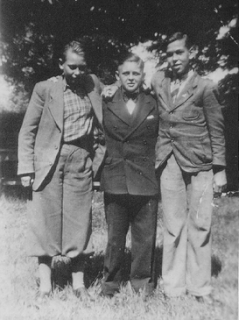
Helmuth Günther Guddat Hübener was a German youth who was executed at age 17 by beheading for his opposition to the Nazi regime. He was the youngest person of the German resistance to Nazism to be sentenced to death by the Sondergericht People's Court (Volksgerichtshof) and executed.
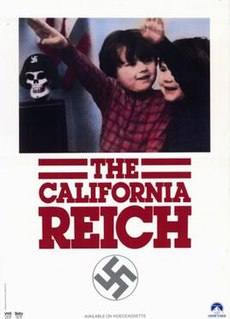
The California Reich was a 1975 documentary film on a group of neo-Nazis in Los Angeles, San Francisco and Tracy, California, USA. They were members of the National Socialist White People's Party, another name for the American Nazi Party that was started by George Lincoln Rockwell. The film received a nomination at the 1976 Academy Awards in the Best Documentary category. It was also screened at the 1976 Cannes Film Festival, but wasn't entered into the main competition.
Dana Adam Shapiro is an American film director, best known for his directorial work on the 2006 Academy Award-nominated documentary Murderball.

Eberhard Koebel also Eberhard Köbel, called tusk, i.e., "the German" in the language of the Sámi people he traveled among, was a German youth leader, writer, and publisher.

The Architecture of Doom is a 1989 documentary by Swedish director Peter Cohen and narrated by Rolf Arsenius. German- and English-language versions have also been released.

Karl-Heinz Schnibbe was a German Resistance to Nazism member during World War II who, as a 17-year-old growing up in Nazi Germany in 1941, was an accomplice in a plan by three German teenagers, members of The Church of Jesus Christ of Latter-day Saints (LDS), to distribute information to the citizens of Germany on the evils of the Nazi regime during World War II. Led by 16-year-old Helmuth Hübener, the three boys created, posted and distributed cards and pamphlets denouncing Hitler and the Nazi party. They were eventually caught by the Gestapo and, after repeated beatings, were convicted and sentenced. Hübener was executed, the youngest person to be sentenced to death for opposing the Third Reich, and Schnibbe was sentenced to five years in a labor camp. After the war and his release from a Soviet POW camp, Schnibbe emigrated to the United States in 1952, living in the Salt Lake City, Utah area until his death on May 9, 2010.
Bill Riccio is a leader in the white power skinhead movement in the United States who gained public notoriety for his appearance in the 1993 documentary Skinheads: Soldiers of the Race War. He has been convicted numerous times on illegal weapon possession charges, the most recent of which was in 1992.

Bombay Beach is a 2011 documentary film directed and produced by Israeli filmmaker Alma Har'el. The film was nominated for an Independent Spirit "Truer than Fiction" Award, won "Best Feature Documentary" at the 2011 Tribeca Film Festival, and has been taught in several universities including Duke University and Harvard’s Sensory Ethnography Lab and Film Center as a genre redefining work. Taking place in the Salton Sea, a rusting relic of a failed 1950s development boom, Bombay Beach is a dreamlike poem that sets three personal stories to a stylized melding of observational documentary and choreographed dance to music specially composed for the film by Zach Condon of the band Beirut, and songs by Bob Dylan.

Hans Blüher was a German writer and philosopher. He attained prominence as an early member and "first historian" of the Wandervogel movement. He was aided by his taboo breaking rebellion against schools and the Church. He was received with some genuine interest but sometimes perceived as scandalous.
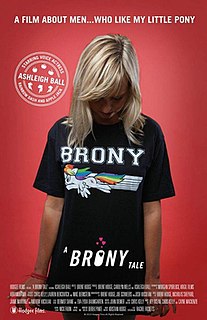
A Brony Tale is a 2014 Canadian-American documentary film directed by Brent Hodge. The film explores the brony phenomenon, the adult fan base of the children's animated show My Little Pony: Friendship Is Magic that arose shortly after its premiere in 2010. The film is structured around the journey of Ashleigh Ball, one of the principal voice actresses for the show, including her initial reactions to learning of this older fanbase, and her travel as a Guest of Honor to one of the first fan conventions BronyCon held in New York City in 2012. Hodge, a close friend of and previous collaborator with Ball, was curious as she was as to this phenomenon and opted to film her travel and appearance at the convention for the documentary.
Melita Maschmann was a German memoirist. She achieved renown with her 1963 book Fazit: Kein Rechtfertigungsversuch which recounted her years as a member of the Hitler Youth and a propagandist for the Nazi machine.
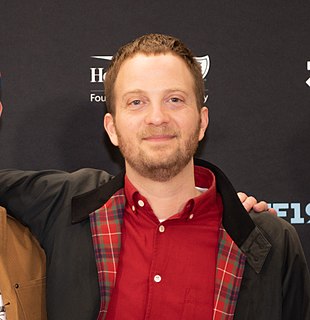
Matt Wolf is an American filmmaker, documentarian, and producer. His notable films include Wild Combination: A Portrait of Arthur Russell, Teenage, Bayard & Me,Recorder: The Marion Stokes Project, and Spaceship Earth. In 2010, he was awarded a Guggenheim fellowship. His subjects include youth culture, artists, archives, music, and queer history.
